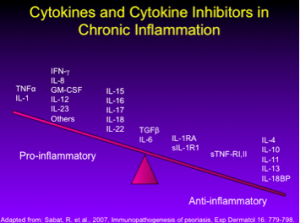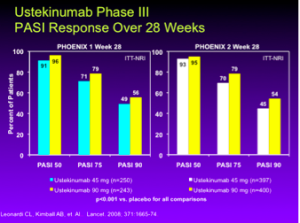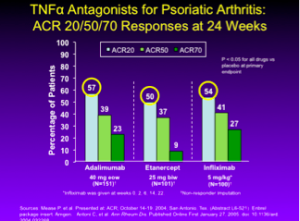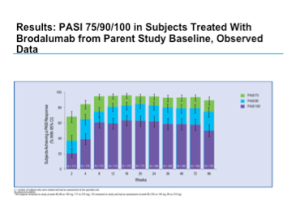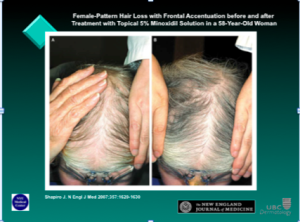Wm. Philip Werschler, MD
In this presentation at MauiDerm 2014, Dr Werschler, a pioneer in the area of toxins and fillers, provided an overview of the fillers currently available on the market along with newer fillers and new data so that we can utilize this information in clinical practice.
A Brief History of Their Time
We started off with collagen, if you wanted a filler, that’s what you got. This is no longer available. At that point in time, we were really focusing on lines and wrinkles. Collagen became products such as Zyplast and Zyderm and was mostly used on lips, crows feet lines, nasolabial folds, and vermillion borders. Then, for many, many years, we had a lull. So, you either did collagen or you didn’t do injectable fillers.Then starting in 2003, the filler market exploded, as you can see from the chart below.

In December, 2003, the US FDA approved Restylane (Hyaluronic Acid), which revolutionized the dermal filler market . With a duration of six plus months, no pre-treatment skin testing, ease of use, room temperature storage and modest cost, there was now a viable product for the emerging, if nascent, dermal filler market.
Radiesse is a novel “next-generation” filler that was approved in 2006 by the FDA for the correction of wrinkles and folds (such as Nasolabial Folds), and for the correction of HIV-associated lipoatrophy. Radiesse is termed a “stimulatory” or “collagen-stimulator” product. This differs from the previous generation “replacement” space occupying materials collagen and hyaluronic acid. With the addition of collagen stimulation, the duration of effect of Radiesse was extended to 9-18 months.
On the same day that Radiesse was approved, the FDA also approved the first and only “permanent” dermal filler, Artefill (collagen + PMMA). Artefill consists of bovine collagen in combination with polymethmethacrylate spheres. As these spheres are non-biodegradable, they represent a permanent placement into the tissue. Well tolerated with an excellent safety profile, Artefill does require pre-treatment skin testing because of the bovine collagen present. Special handling includes refrigeration, and collagen stimulation gradually anchors the PMMA spheres into place typically after 2-3 treatments.
In 2007/2008 Hyaluronic Acid plus lidocaine was FDA approved for the hyaluronic acids, Juvederm, Restylane and Perlane. Similarly, the FDA approved the mixing of lidocaine and Radiesse by the injector at the time of use. These approvals resulted in greater patient comfort during injection and further expanded the dermal filler marketplace. Stabilized Porcine Collagen came onto the market briefly during this time, however due to problems with patient tolerance and complications, the manufacturer withdrew the product and it is no longer available.
In 2009, the FDA approved Sculptra, poly L lactic acid, for aesthetic use (it received FDA approval in 2004 for HIV associated facial lipoatrophy). A pure collagen stimulator, Sculptra, is technically not actually a dermal filler, however; it is best thought of in this category. Sculptra is routinely mixed with lidocaine and sterile water for injection, requires 3-5 injections sessions to gradually grow new collagen leading to the clinical effect developing over a period of three to six months. Duration is a 2+ years effect based on extensive clinical trials and experience.
More recently, an advanced technology hyaluronic acid, Belotero, and an autologous cultured dermal fibroblast (LAVIV) were approved. Laviv, like Sculptra, is technically not a dermal filler but rather a tissue stimulator that up-regulates native collagen production. This process includes harvesting tissue from the patient (post-auricular) and sending it to a processing laboratory that then amplifies the cell count and returns a viable culture for re-injection. The first FDA approved tissue cell culture therapy for aesthetics, Laviv, presents a multitude of intriguing possibilities in the future.
Most recently (2013), we have hyaluronic acid with Vycross technology, known as Voluma.
In order to use fillers, it is important to understand their mechanism of action. There are two primary components of MOA:
- Volume Replacement
- Collagen Stimulation-either as part of its MOA or its primary MOA
If you use the above approach, collagen and hyaluronic acids have an immediate correction and they do not really have, as a primary mechanism of action, any neocollagenesis effect; therefore, collagen and hyaluronic acids are replacement fillers. PLLA (Sculptra) and LAVIV are bio-stimulatory. And notably, CaHA and PMMA are blends of both MOAs.

How do fillers exert their characteristics?
Fillers are commonly compared by viscosity ,elasticity and cohesivity, the three physical properties that dictate the ability of a filler to provide volume plus lift and the ability to resist becoming separated in tissue. All three of these measurements are made in-vitro, and are surrogate measures for in-vivo activity. Viscosity is the measurement of a material’s ability to resist a force that is applied to it. It relates to the movement of the material in response to force. So, highly viscous materials require more force to move or spread compared to lower viscous materials. A filler with a high viscosity “stays where you put it”, providing a “what you see is what you get” results. Fillers with lower viscosity will have the propensity to be easily spread and splay into surrounding tissues.

You’ll see on the graph above that the products with the greater viscosity are Radiesse and Restylane SubQ (not available in the US). Does this mean that they are better products? Not necessarily, it depends on the tissue characteristics for which you are looking. It means that these products have more of an ability to push back against a force that is applied to them.
Elasticity, measured as G’, is the material’s ability to push back against a force that is applied to it. Fillers with a high G’ will resist the forces placed on it, such as gravity, skin laxity, etc. and will provide greater lift to the overlying tissues. Fillers with a low G’ will not have the capacity to lift well, and; therefore, require larger volumes of material to compensate.

What does this mean clinically? Well, in part it means that some activity of a filler can be predicted by laboratory measurements. It also means that only personal experience can determine which filler you use for any particular indication and patient experience and satisfaction will determine the final choice of product.
These are important concepts to think about. Some products provide soft lifting and some products provide a firm lifting.
Volume Replacement
Hyaluronic Acids (HAs)
Volume replacement is all about HAs today in the marketplace. It is when you inject a product that occupies a space and holds that space until that product is either removed or, in the case of HAs, is degraded through natural enzyme processing.
HAs have a very simple chemical structure and is identical in all species and tissues; thus it is non-immunogenic. It is found in all vertebrates and synthesized by some bacteria. The identical structure of HA from all sources makes it an ideal substance for use as a biomaterial in health and medicine. HAs are highly hydrophilic; therefore, they absorb water, i.e., their principal method of giving a volumizing effect. They are also rapidly metabolized in vivo.
HA was first discovered in 1934 by Meyer and Palmer and was first used therapeutically in 1970. During the 1980s, Biomatrix, Inc. developed second-generation HA derivitives (hylans) through cross-linking (stabilization), and in 1986 the term “hyaluronan” was coined. The increased stabilization increases the ability of the product to do the work that you want it to do. By 1996, we had the first generation of resorbable gels based on hyaluronic acid of animal origin. In 1998, we had the second generation of resorbable gels based on hyaluronic acid of non-animal origin—these were biphasic products. In 2000, the third generation of resorbable gels came about, based on hyaluronic acid of non-animal origin—monodensified, mono-phasic products. And, in 2005, we saw more technological advances with Cohesive Polydensified Matrix technology, allowing for different tissue characteristics.
HAs can be used virtually everywhere for anything and everything and they are the most versatile of all of the filler products. These fillers may be ideal for novice patients because they have an “eraser” (hyaluronidase) that can be injected to make the product dissolve, if so desired for either aesthetic effect or for treatment of complications including necrosis. . This is a unique feature of this category. Remember that while some HAs seems to work better in certain areas, this is based on personal preference.
What’s New?
- Voluma XC
- Belotero (sort of)
- Expressions (kind of)
- Corporate acquisitions and news
Vycross Technology
Juvederm Voluma XC is FDA approved HA to correct age-related volume loss in the mid-face. We know that volume loss creates the aging changes. The VYCROSS technology formulation produces highly cross-linked gel, increasing lift, capacity, and duration. The duration of this product is up to two years. Duration claims are always a slippery slope, so be sure to caution your patients.
The pivotal clinical study was a multi-center, single blind, no-treatment control study of 282 subjects (235 in the treatment group/47 control “no treatment”) in fifteen North American sites. The subjects received 20 mg/ml HA volumizing filler for cheek augmentation to correct mid-face volume deficit. There was one treatment plus one optional “touch-up” one month later.
Eligible subjects must have scored an overall Mid-Face Volume Deficit score of greater than three on a six-point scale.
- 3 = moderate concavity of mid face, tear troughs, mild nasojugal and pre-jowl, mild prominence of bony landmarks and musculature
- 4 = significant concavity of mid-face, tear troughs, moderate nasojugal and pre-jowl, moderate prominence of bony landmarks and musculature
- 5 = severe concavity of mid face, tear troughs, severe nasojugal and pre-jowl, moderate prominence of bony landmarks and musculature
The study endpoint looked at the Mid-Face Volume Deficit scale at six months with the primary endpoint being greater than 70 percent responder rate versus control. The primary endpoint was met with an 85.6 percent treatment group response rate.
Subject Rated Duration
6 months = 95.1%
12 months = 80.4%
18 months = 67%
24 months = 53.7%
Physician Rated Duration
6 months = 76.8%
12 months = 64.3%
18 months = 57.9%
24 months = 46%The range of volume used in the study was rather dramatic as it went from 1.2mL to 13.9mL. The median for all three subregion treatment areas (mid-face) was 6.6mL.
VYCROSS technology has opened up the mid-face volumization category for us, as practitioners.
CPM Technology
Belotero is a “cohesive polydensified matrix” hyaluronic acid. CPM technology allows for variable degrees of product/tissue integration. With less homogenous bulk, there is less monochromatic refraction of ambient light. The net clinical result is that the product may be injected more superficially than other HAs without risk of the Rayleigh/Tyndall effect tinting the skin blue.
Expressions
Expressions is a hyaluronic acid filler that is FDA approved for nasal splinting; however, it is not FDA approved for aesthetic use, yet it is heavily marketed to the aesthetic community. Expressions is an HA product that is made with Bacillus Subtilis Fermentation and it comes in a 1.5mL syringe.
New Approaches to Fillers
NeoCollagenesis
Poly-L-Lactic Acid
Through a variety of mechanisms of action, they stimulate fibroblasts to make collagen, making Sculptra more of a tissue stimulator as opposed to a filler, per se.
It is the only approved pure collagen stimulator currently available in the US; therefore, it is considered “stimulatory” and “biodegradable” in classification. PLLA is indicated for the correction of nasolabial folds. Of note, Dermik aesthetics, a division of sanofi-aventis, recently sold the product to Valeant Pharmaceuticals Intl. based in Canada. It takes time and a number of treatments; however, the duration is about two to three years. It is important to remember that it is difficult to establish exact duration of the product because of one’s natural course of aging.
What is the composition of PLLA?
- Poly-L-lactic acid
- Sodium carboxymethylcellulose (CMC)
- Non-pyrogenic mannitol
- Sterile water (added) for injection (USP)
- Lidocaine (optional—most dermatologists and plastic surgeons add lidocaine for patient comfort)
Sculptra™ is composed of microparticles of PLLA, a biocompatible, biodegradable, synthetic polymer from the alpha-hydroxy-acid family. It is derived from natural components, it is a crystalline, amorphous mixture with microparticles averaging 40 to 63 μm in size. The slow resorption of PLLA after implantation is due to the high molecular weight (140,000 Daltons) of the polymer and the irregular crystalline shape of the microparticles.
Lactic acid can be converted through polymerization to a variety of polymers, including poly-L-lactic acid. Many of these polymers, including polylactic acid, have been used for many years in medical devices and sutures, including absorbable sealants, flow restrictors, fixation systems, suture anchors/absorbable sutures, fixation screws, and tissue regeneration.
Investigator evaluations throughout the study confirmed that improvements in facial appearance with Sculptra®Aesthetic were achieved in WAS. As this graph shows, improvements from baseline at 25 months proved to be consistent, progressive, and statistically significant at each time point (P<0.001): 100% of patients improved at week 3; 88.7% at month 13; and 86.3% at month 25.

Where is it used?
Poly-L-lactic acid treatment primarily to add volume, and as such is used to thicken dermis and to stimulate collagen growth in the pre-periosteal plane. Placement may include the temporal hollows, across the zygomata, in the mid face, nasolabial folds, labiomental sulcus, prejowl sulcus, mandibular sweep and angle and for genioplasty. Sculptra is not recommended for use in areas of concentric movement such as the lips and eyelids. In terms of adding volume, this is a great way to go. As you become skilled with PLLA, there are a lot of great things that you can do with it over time.
Personalized Dermal Technology
Azficel-T (LaViv) is an interesting, innovative technology to isolate, purify, and regenerate a patient’s own fibroblast cells for re-injection.
Fibroblast cells produce collagen and play key role in the continued health of skin. Collagen provides firmness and structure to the skin and is essential in supporting the dermis. As skin ages, fibroblast cells decrease and the collagen matrix that provide the skin its structure breaks down.
This is a way to restore the equilibrium. LaViv is the first autologous cell therapy for use in aesthetics filed with the FDA. There is strict release testing on each clinical lot to ensure performance and safety including:
- Collagen content testing results must achieve specification for each prepped injection, indicating cells are biologically active and produce collagen
- Cell suspension must consist of at least 98% fibroblasts prior to release
- Cells in suspension must achieve a viability level of at least 85%
Treatment Process
A small cell sample is removed from behind the ear from a small skin punch biopsy with the use of a local anesthetic. A proprietary manufacturing process multiplies the fibroblasts from the sample into tens of millions of new cells in approximately three months. The fibroblasts are tested by quality control and released by quality assurance prior to the shipment. The cells are then frozen for use in potentially multiple treatment sessions. The recommended regimen is three treatment sessions at three to six week intervals. In clinical trials, Azficel-T and placebo was seen by the time of the third treatment. Dr Werschler feels that if you have a patient who doesn’t want a “foreign” substance used for aesthetic purposes, this is a nice alternative to be able to offer as it’s personalized dermal cell technology. Of note, the side effects are minimal, mostly pruritis.

Volume Replacement + NeoCollagenesis
Calcium Hydroxylapatite (CaHa)-Radiesse
CaHA has a biphasic MOA, it is 30 percent calcium particles and 70 percent CMC gel. CaHa is best used for regional facial contouring. Dr Werschler uses this product for structural augmentation, i.e., helping to define the face. Its mechanism of action is to serve as a filler material initially (particles + gel) then provide long-term benefit through natural collagen integration in and around the particles. The result is a long lasting, but not permanent correction augmentation that feels like the patient’s own tissue. Remember with Sculptra, the volume effect comes from neocollagenesis; however, with Radiesse, because it is a biphasic product, you get an immediate corrective effect which then stimulates neocollagenesis at a rate which prolongs the effect clinically that you see; therefore lasting longer.
The advantages of Radiesse include immediate site-specific correction in one to two sessions and strong structural tissue support with no Rayleigh/Tyndall effect. CaHa is malleable up to two weeks and has a long duration of nine to 18 months. No pretreatment testing is required, it is also cost-effective and does not migrate or obscure radiographic studies and it doesn’t ossify in the skin. Radiesse received approval in the United Sates in 2006 for both HIV and aesthetic use and is the only approved biodegradable dual collagen stimulator and replacement filler currently available in the US. When utilizing Radiesse, no skin or allergy testing is needed and there is no special handling. The product is available in 0.3, 0.8 and 1.5 mL and recently approved 3.0 mL syringes through Merz Aesthetics.
Where is it used?
CaHA is used most everywhere; however, it is not recommended to be used in the lips or around the eyes.

PMMA Dermal Filler-ArteFill
ArteFill was approved in the United Sates in 2006 and is the only approved PMMA-enhanced dermal filler currently available in the US. It is indicated for the correction of nasolabial folds. Suneva Medical acquired (ARTES) Artefill in 2009 and is currently manufacturing, selling, and distributing Artefill in the US. Of note, it is currently awaiting FDA approval for acne scars.
ArteFill is a combination of purified bovine collagen plus polymethyl-methacrylate beads. Essentially, you drop the beads into the tissue that are then carried by the bovine collagen that is then rapidly reabsorbed. You see a neocollagenesis effect from the fibroblasts around the PMMA particles that are locked into place so that they do not migrate providing a long-standing correction. You can see from the graph below that the five-year follow-up study demonstrates long-lasting effects.

Conclusions
Injectables are: Facial Shaping Agents
- They can enhance natural features
- They can rejuvenate fading youth
- They can restore aged, facial features
- They can even improve natural beauty
- Each product has features that result in certain benefits in clinical use
- They are not all alike!
What’s new?
- Not that much…but quite a bit
- CPM technology is “back” on market
- Valeant owns Medicis, Dermik
- FDA approval for Allergan’s Vycross technology mid-face volumizer
- Expressions is in the neighborhood
- Merz has acquired Neocutis
- Allergan has acquired SkinMedica
- Valeant (Medicis/Dermik) has Obaji
- Merz acquired Anteis (Beletero family-Soft, Basic, Intense)
Additionally, Allergan has clinical trials underway in the United States for Volbella and Volift. A new player, Alphaeon, has products at different states of pre-approval; they have licensed Teoxane (filler and skincare line), they have also licensed a neurotoxin which is not yet on the market and the company plans to expand on lifestyle medicine, focused on wellness, beauty and performance.
Clinical Pearls
- Use filling agents appropriate to the requirements of the job
- Lifting tissue requires robust strength, longevity, durability, and safety
- For surface “crinkles” use “thin” or “dilute” products
- Not all products are created equal – understand the differences!
- Some products create “soft” volume, others “firm” volume
- Some areas are more difficult to correct than others (e.g. lips and tear troughs)
- Create facial filling improvement by starting with low-risk/high-satisfaction areas—utilize a STEP approach
- Evaluate and approach filling from a multi-step progression:
- Integrate filling with development of structure and support, progress to volume replacement and refine with contour
- Product duration claims are a slippery slope—be careful with those and be conservative with your ranges
MauiDerm News Editor- Judy Seraphine

